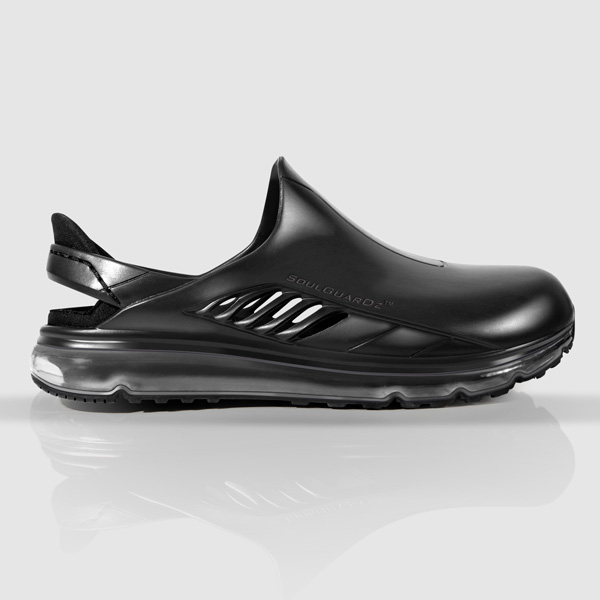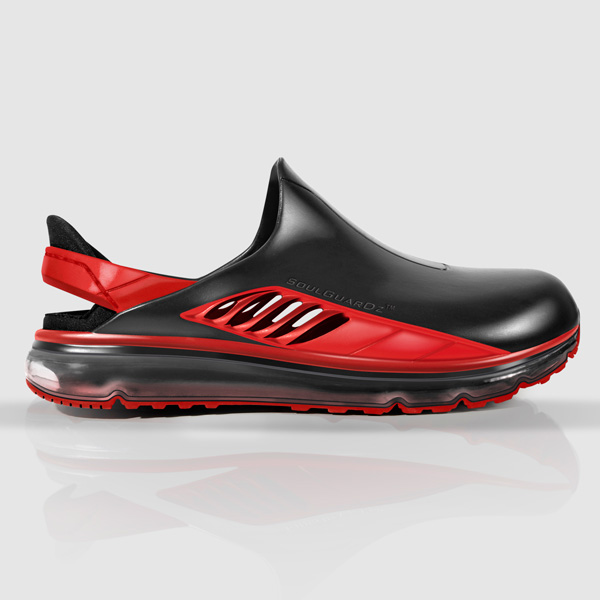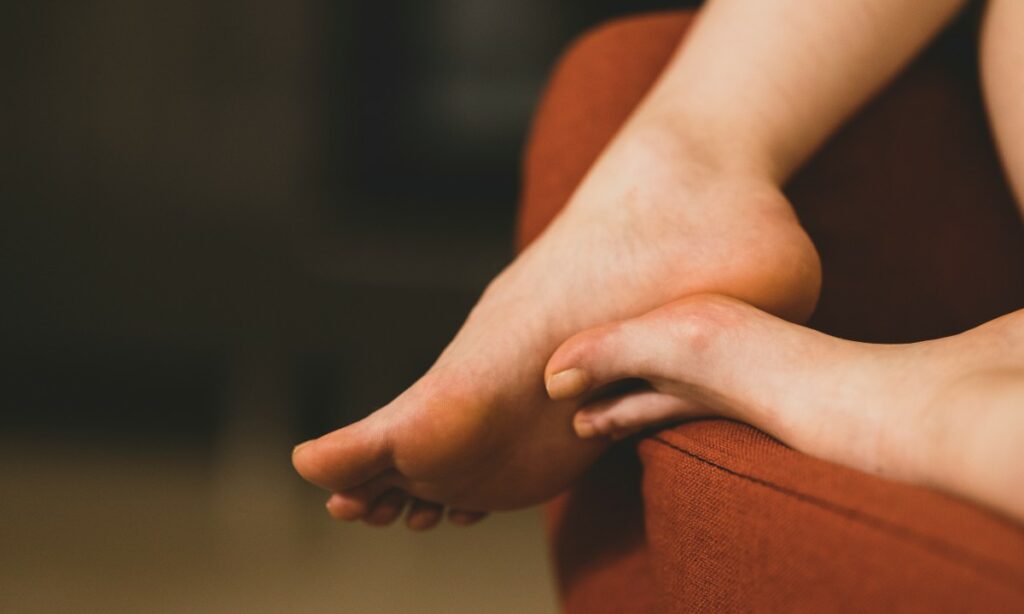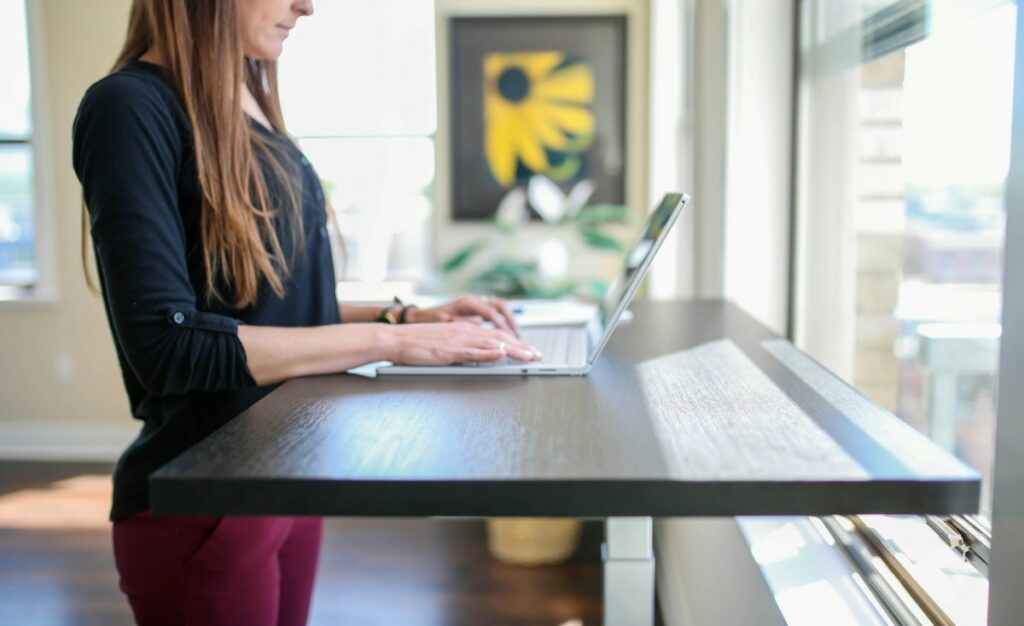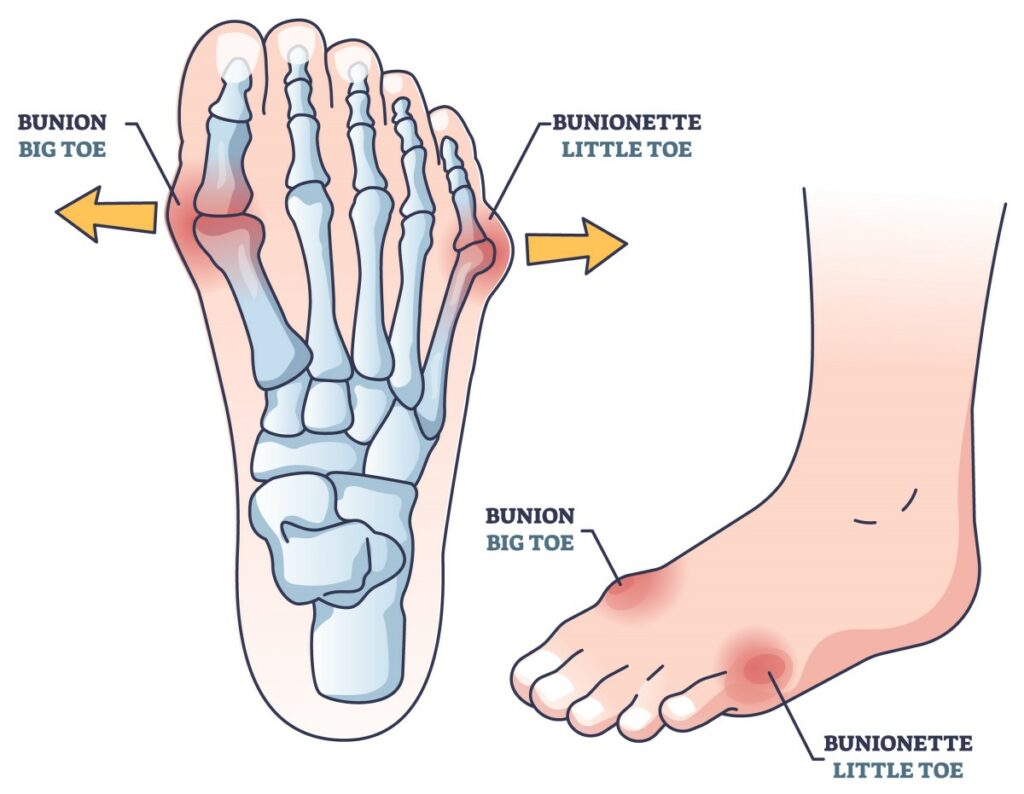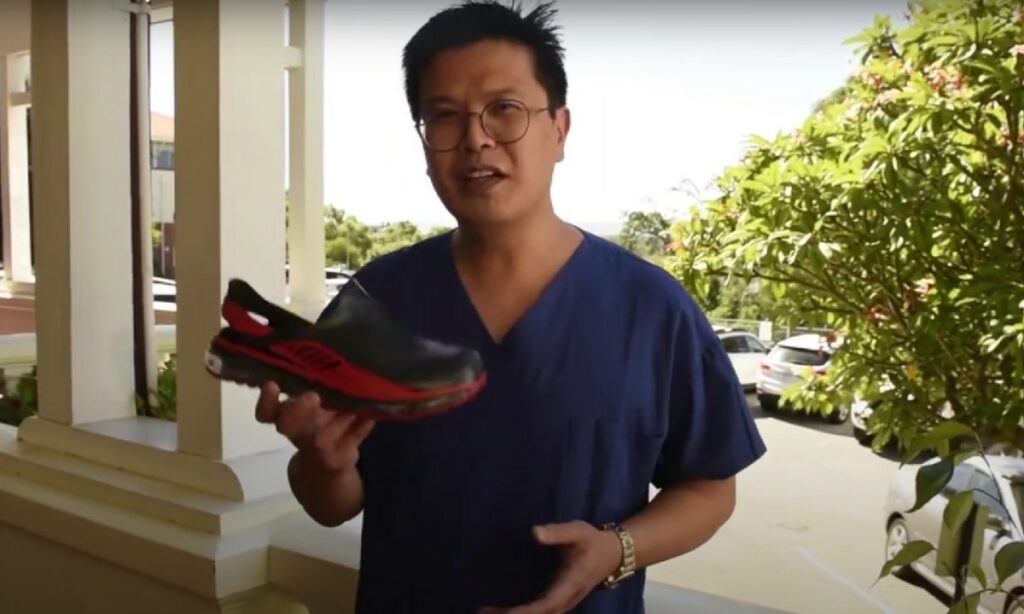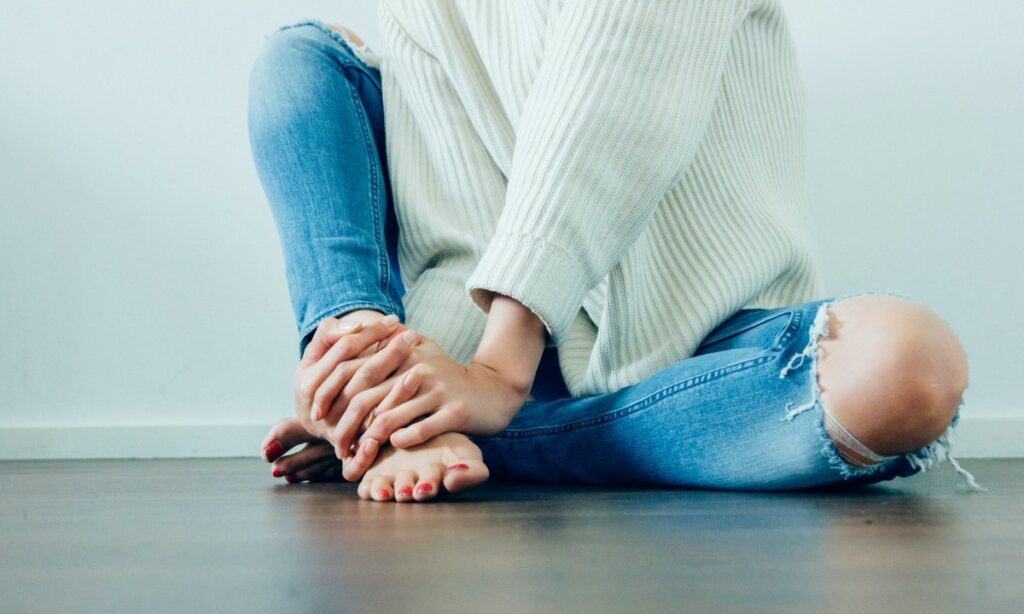
Prevent and relieve aching feet from standing all day
For many professionals, standing all day is an occupational necessity. This includes healthcare workers, retail and hospitality employees, and those in the manufacturing sector.
While standing may seem benign, it places a significant strain on the feet, leading to a range of health issues. Prolonged standing can cause swelling, exacerbate conditions like plantar fasciitis, and increase the risk of vascular problems such as varicose veins.
Common symptoms associated with prolonged standing
- Swelling of the feet and ankles due to fluid accumulation
- Pain and discomfort in the heel and arch of the foot
- Muscle fatigue leading to a feeling of tiredness in the legs
- Development of foot deformities such as bunions and hammertoes
- Increased risk of injury due to compromised foot mechanics
Simple measures you can take
Simple measures such as proper footwear, regular breaks, and foot exercises can make a significant difference. Learn more about these below. Also, recognising when to seek professional medical advice is essential for those with persistent or severe symptoms.
Understanding the mechanics of foot pain
Stress points in the foot when standing
When standing, the feet bear the brunt of the body’s weight, leading to stress on specific anatomical points. The heel bone (calcaneus), the ball of the foot, and the base of the toes are primary pressure receivers. The arch of the foot also plays a crucial role in weight distribution and shock absorption.
Prolonged standing can lead to overstretching and strain on the plantar fascia, a thick band of tissue that connects the heel to the toes, which can result in inflammation and pain known as plantar fasciitis.
Muscle fatigue and the development of plantar fasciitis
Muscle fatigue in the feet and calves is a common consequence of prolonged standing. As muscles tire, they become less efficient at supporting the arch and stabilising the foot, which can lead to improper foot mechanics. This inefficiency can increase the strain on the plantar fascia, potentially leading to micro-tears and inflammation, a condition known as plantar fasciitis.
Regular stretching exercises, particularly for the Achilles tendon and plantar fascia, can help alleviate and prevent this condition by improving flexibility and reducing tension in the affected tissues.
Ways to prevent aching feet from standing all day
Proper footwear
One of the most important steps in preventing foot pain is selecting the right footwear. Shoes that provide adequate support and fit properly are essential, especially for individuals who spend long hours on their feet.
Proper footwear should have a low heel, good arch support, and a nonslip sole. Ensure there is at least a half-inch of space between your longest toe and the end of the shoe. Additionally, consider adding orthotic inserts for extra cushioning and support.
Here is a shoe we highly recommend for healthcare and hospitality workers. It’s been specifically designed to prevent aching feet from standing all day and the conditions prevalent in their workplaces. In reality though these shoes suit a broad range of occupations.
Regular stretching and strengthening exercises
Engaging in regular stretching and strengthening exercises can significantly reduce the risk of foot pain. Stretching the Achilles tendon and calf muscles can improve flexibility and reduce stress on the foot.
Simple exercises such as standing calf stretches, toe raises, and towel curls can strengthen the muscles in your feet and lower legs, improving balance and stability.
Incorporate these exercises into your daily routine to maintain healthy foot mechanics.
Taking Breaks and Changing Positions
Continuous standing can lead to muscle fatigue and foot pain. To alleviate this, it’s really important to take regular breaks and alternate between sitting and standing positions throughout the day. This helps to balance the pressure on your feet and lower back.
During breaks, elevate your feet if possible to improve circulation and reduce swelling. Simple movements such as toe wiggles and ankle rotations can also promote blood flow and prevent stiffness during periods of prolonged standing.
By implementing these preventive measures and foot care strategies, you can significantly reduce the likelihood of experiencing foot pain from standing all day.
Ways to relieve aching feet from standing all day
Effective stretching techniques
Stretching is a simple and effective way to alleviate foot pain caused by prolonged standing. Here are some stretches you can do at home:
- Toe Curls: Sit with your feet flat on the floor and place a towel under your toes. Curl your toes to scrunch the towel towards you, holding for a few seconds before releasing.
- Marble Pickups: Scatter a few marbles on the floor. Using just your toes, pick them up one by one and place them into a cup.
- Calf Stretch: Stand facing a wall with your hands at shoulder height. Place one foot behind you, keeping it flat on the floor. Gently lean forward, bending your front knee while keeping the back leg straight. Hold for 15-30 seconds and switch legs.
Regularly performing these stretches can help prevent muscle fatigue and maintain flexibility in your feet.
Compression socks to improve circulation
Compression socks are designed to apply gentle pressure to your legs and feet, promoting blood flow and reducing swelling. They can be particularly beneficial if you experience discomfort and heaviness in your legs after standing all day. Wear compression socks during or after long periods of standing to help minimise pain and improve circulation.
Elevation techniques to reduce swelling and discomfort
Elevating your feet can provide quick relief from the pain and swelling associated with standing for extended periods. The goal is to raise your feet above heart level to reduce the gravitational pull on fluids that can lead to swelling in the lower extremities. Here’s how to properly elevate your feet:
- Find a comfortable position lying down and use pillows or cushions to prop up your feet.
- Ensure that your feet are higher than your heart to maximise the effect.
- Try to maintain this position for 15-20 minutes, several times a day, especially after work.
Therapeutic effects of foot soaks and epsom salts
After a long day of standing, a warm foot bath can be a sanctuary for sore, tired feet. The addition of Epsom salts, which are composed of magnesium sulfate, can enhance this soothing experience. Magnesium, when absorbed through the skin, may help to reduce muscle soreness and inflammation.
To create an Epsom salt foot soak, simply dissolve one cup of Epsom salts in a tub of warm water and immerse your feet for about twenty minutes. The warm water helps to improve circulation, while the Epsom salts can aid in reducing swelling and alleviating discomfort.
Foot massage for pain relief and relaxation
Massage is a time-honored method for relieving foot pain and promoting relaxation. By massaging your feet, you can increase blood flow, ease muscle tension, and enhance overall foot health.
Techniques such as kneading the sole, circling the ankles, and gently pulling the toes can be particularly beneficial. For those who prefer a more hands-off approach, rolling a tennis ball or foot roller under the foot can provide a similar therapeutic effect. When massaging your feet, consider using lotion or oil to reduce friction and enhance the relaxing sensation. Some people prefer electronic foot massagers. There are a lot of benefits of foot massage.
Important
Combining these at-home treatments can offer significant relief to those with aching feet from standing all day. However, if pain persists, it’s important to consult a healthcare professional for further evaluation and treatment.
When to seek professional medical advice
Identifying signs of serious foot conditions
While many instances of foot pain can be alleviated with at-home treatments and preventive measures, certain symptoms may indicate more serious conditions that require professional medical attention. It is crucial to be vigilant and recognise when foot pain is not just a result of tired muscles or a long day on your feet. Seek medical advice if you experience:
- Persistent pain that does not improve with rest and home remedies
- Severe swelling, redness, or warmth in the foot
- Signs of infection, such as fever or pus from an open wound
- Numbness, tingling, or loss of sensation in your feet
- Difficulty walking or bearing weight on your feet
- Foot deformities or changes in the shape of your feet
- Heel pain that is severe, especially upon waking
These symptoms could be indicative of conditions such as diabetes, nerve damage, fractures, or severe ligament injuries and should not be ignored.
Dr Joo Teoh has produced a revolutionary shoe to reduce pain for healthcare workers. In fact, this shoe is perfectly suited to many different occupations including hospitality.
